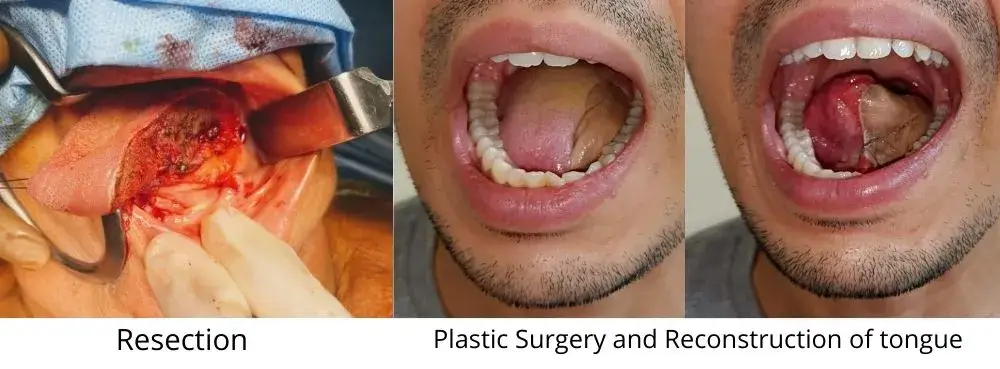Diagnosis & Treatment - Tongue Cancers
Tongue cancer treatment in Ahmedabad
Tongue Cancer Diagnosis
Biopsy
A biopsy is the first step in the diagnosis of tongue cancer. During a biopsy, a small amount of tissue is taken from the part of the tongue where cancer is suspected. The tissue is sent to a pathologist, who examines it under a microscope and helps to make the diagnosis.
Imaging studies
Special x-rays, such as CT scans, MRIs, or PET scan, may be done. These imaging tests provide more details about the cancer. These images can show how deep the cancer is and if it has spread or not. It helps to know the stage of the tongue cancer.
Toungue Cancer Treatment
The goals of the treatment of tongue cancer are to:
- cure the cancer
- preserve your appearance and the function of your tongue
- prevent the cancer from coming back
The stage of the cancer guides your plan of care.
Surgery is the most common treatment for cancers of the tongue. If the cancer is more advanced, radiation, chemotherapy, or both may be used to shrink the tumor before or after surgery to reduce the risk of the cancer coming back.
Tongue Cancer Surgery
Glossectomy is the name of the surgery used to remove cancers of the tongue.

For smaller cancers, only part of the tongue may need to be removed (partial glossectomy).
For larger cancers, a more substantial portion of the tongue may need to be taken out.
People who have surgery to remove large tongue cancers may require reconstructive surgery, as well as help from experts trained in rehabilitation for speech, chewing, and swallowing.
We preserve and reconstruct the remaining portion of the tongue using innovative techniques to achieve the best function possible. We frequently perform a radial forearm flap, taking skin from the forearm and the soft tissues underneath or Anterolateral thigh flap from the skin and soft tissue of the thigh area; to rebuild the tongue.
Know More
Know More
Know More
Know More
Know More
Specialization
Oral (Mouth) Cancers Tongue Cancers Throat Cancers (Laryngeal and Pharyngeal Cancers) Thyroid Tumors Parathyroid Tumors Nasal and Paranasal Sinus Cancers Anterior and Lateral Skull Base Cancers Salivary Gland TumorsContact Us






